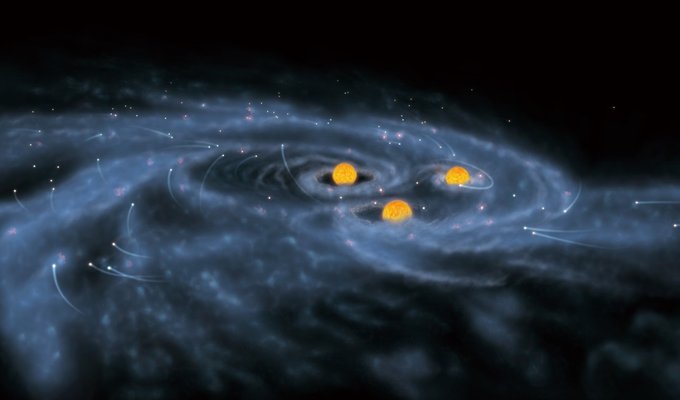Supermassive black holes can be up to 10 billion times as massive as our Sun!

Almost every galaxy - including our Milky Way - has a giant black hole at its center. These are known as supermassive black holes as they are the largest known type of black holes. Despite the number and size of these black holes, scientists still don't know where they come from or how they form/ A team of researchers has now provided new insights into the formation of supermassive black holes, by adding new ingredients to the black hole’s diet.
Superstars
Many astronomers believe that these giant black holes form when large, ancient clouds of gas and dust collapse to make supermassive stars. At the end of the stars’ lifetimes, they evolve into supermassive black holes.
Still, there is one problem with this theory: it only works for “pure” clouds of gas, which only contain hydrogen and helium. Such clouds only existed when the Universe was still very young, and they could have formed some supermassive black holes at this time indeed. However, they could not have produced all the supermassive black holes that we see in the Universe today.
Rich Clouds
Scientists at Tohoku University in Japan started the quest for discovering other ways supermassive black holes could have formed when the Universe was no longer an infant. As the Universe grew older, the clouds of gas were not ‘pure’ anymore: besides hydrogen and helium, they also included heavier elements such as oxygen and carbon. This made the clouds start to behave very differently: they no longer make supermassive stars. Instead, the clouds break up into smaller clumps. These smaller clumps then evolve to form small stars, which are unable to create supermassive black holes of their own.
The researchers asked themselves whether supermassive black holes can still form in these clouds that are “enriched” with heavier elements. To find the answer, they conducted computer simulations of such clouds. By using new, very powerful computers the team could see what happens in them for the first time.
A New Theory
To their surprise, the astronomers discovered that supermassive stars can still form in the enriched clouds. Indeed, the clouds break up and create many smaller stars. However, the smaller stars flow to the center of the cloud, where they are swallowed up by other stars. Eventually, some stars swallow up so many smaller stars that they become supermassive stars, which can evolve into a supermassive black hole.
This new finding suggests that supermassive black holes do not only evolve from a diet of ‘pure’ clouds, but could also have a “richer” menu of stars. This helps to explain why so many supermassive black holes are observed today.
Image credit: NAOJ
Supermassive black holes can be up to 10 billion times as massive as our Sun!